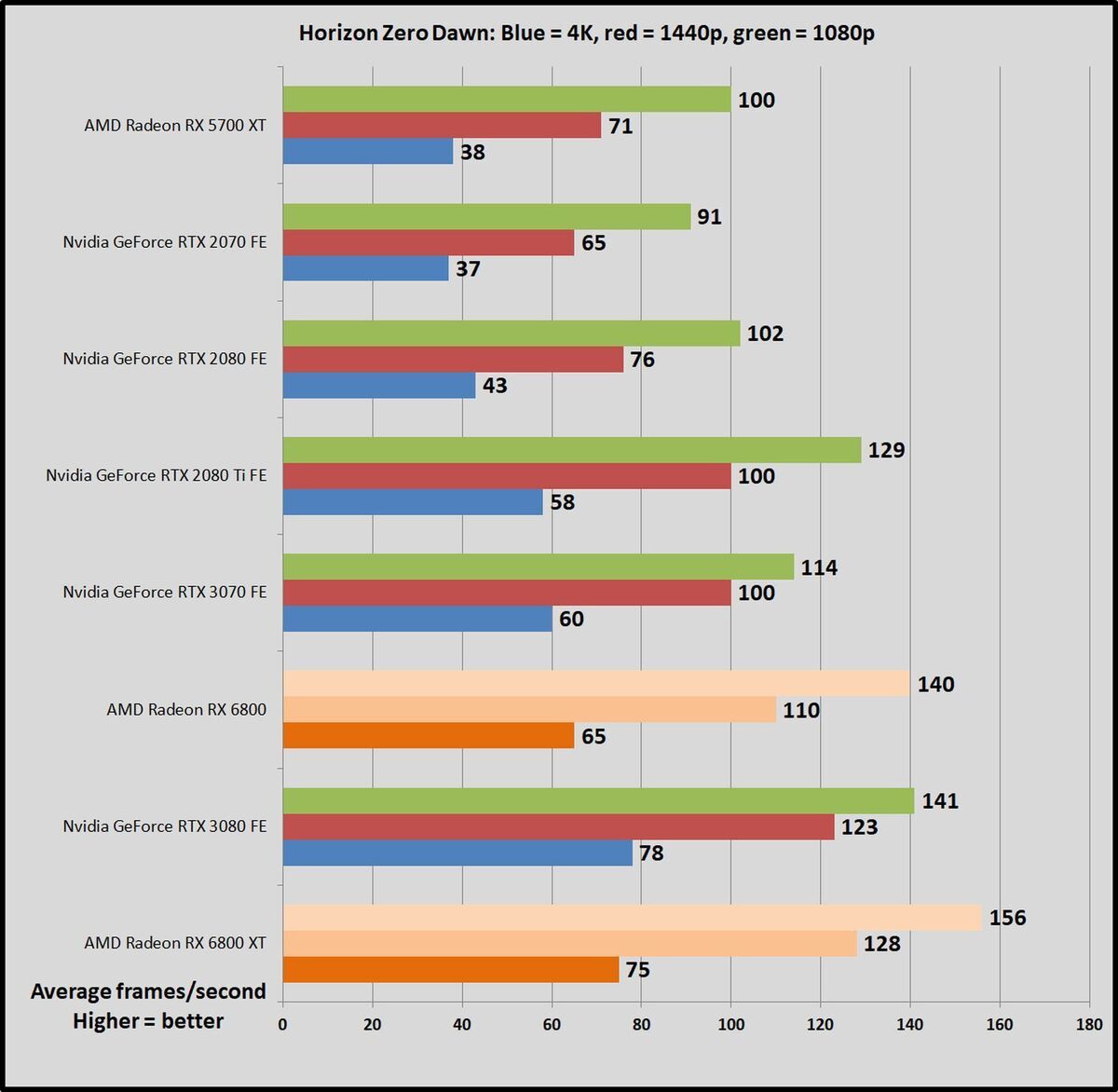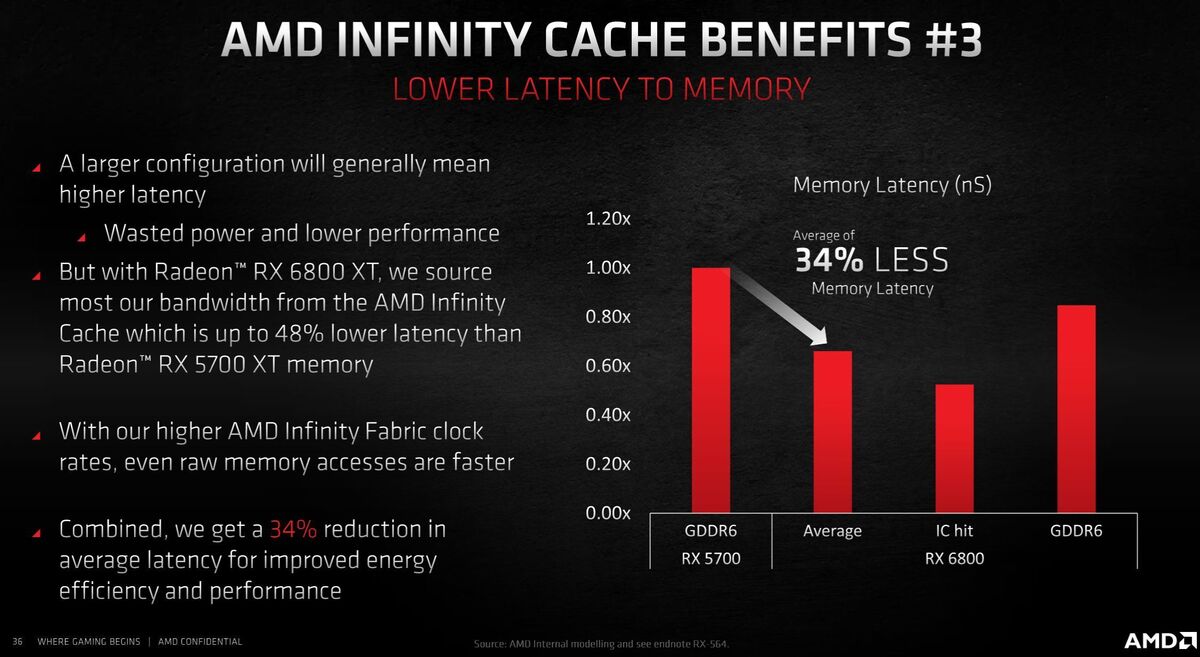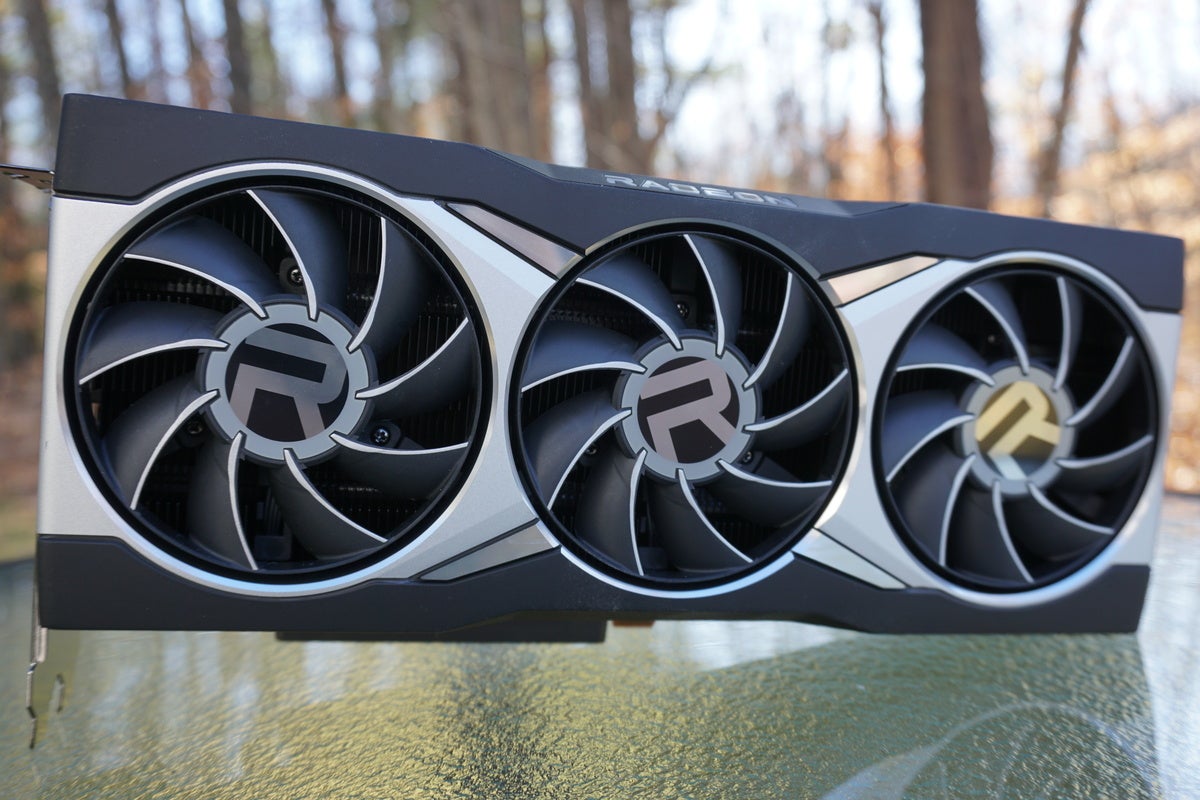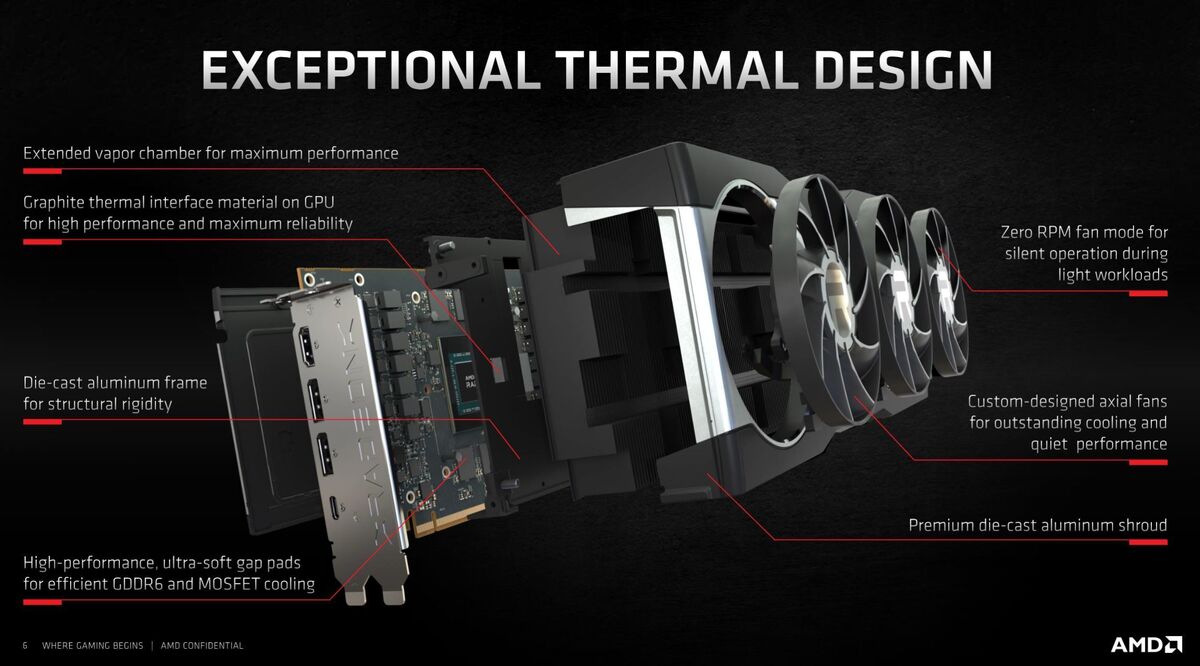 Credit: Brad Chacos/IDG
Credit: Brad Chacos/IDG
AMD’s next-gen Radeon RX 6000-series graphics cards are here, and they’re amazing. The $579 Radeon RX 6800 and $649 Radeon RX 6800 XT bring a fierce battle to Nvidia’s flagship GeForce CPUs, offering flat-out outstanding performance, a vastly improved cooling solution, and more.
We’ve already dug deep into AMD’s fresh RDNA 2 architecture, and delivered our comprehensive verdict on the Radeon RX 6800 and 6800 XT. Check those out if you want more detailed info, but for the quickest hit, here are the five things you need to know about AMD’s new Radeon RX 6800-series graphics cards.
1. They’re wicked-fast
Both of these cards absolutely scream while gaming—even at 4K resolution with all the eye candy cranked. The Radeon RX 6800 beats the GeForce RTX 3070 in every gaming benchmark we threw at it, except for in Total War: Troy, which strongly favors Nvidia’s architecture. The Radeon RX 6800 XT trades blows with the GeForce RTX 3080 at 4K for $50 less.
 Brad Chacos/IDG
Brad Chacos/IDG
Performance in Horizon Zero Dawn
Just as vitally, Nvidia’s new graphics cards perform their best at 4K resolution. AMD’s Radeon RX 6800-series GPUs scale down to lower resolutions with much more potency. If you’re planning to pair your graphics card with a high-refresh rate 1440p or 1080p monitor, you’ll get more frames out of AMD’s graphics cards—especially at 1080p resolution, where the Radeon RX 6800-series surges past Nvidia’s performance in many games.
2. They have a lot of memory
Nvidia opted to give the GeForce RTX 3070 8GB of GDDR6 memory, and the RTX 3080 has 10GB of faster GDDR6X. That’s fine for most of today’s games, but if you’re playing at higher resolutions it might feel a bit cramped in a year or two. We’re already seeing some games exceed 8GB of VRAM usage even at 1440p with ray tracing active, and Doom Eternal can go over 10GB with its Nightmare settings.
 AMD
AMD
The ample 16GB of GDDR6 in the Radeon RX 6800-series GPUs is augmented by AMD's Infinity Cache technology.
AMD outfit the Radeon RX 6800 and RX 6800 XT with a beefy 16GB of GDDR6, so memory capacity shouldn’t be a concern for these graphics cards even if demands continue creeping up. Better yet, that massive memory configuration is bolstered by a 128MB “Infinity Cache” located on the GPU itself. The Infinity Cache can handle a lot of the data for a given frame right on the die, lowering latency and energy costs. You can find a lot more info about the technical details in our RDNA 2 architecture deep dive.
3. They have ray tracing, but not DLSS
Yep, AMD does ray tracing now. Like Nvidia’s rival GeForce RTX GPUs, RDNA 2 bakes dedicated ray acceleration hardware into each Radeon compute unit. AMD’s debut offering is fast enough to let you game at both 1440p and 1080p with ray tracing on and visual options mostly cranked to the max.
RDNA 2 isn’t as efficient at ray tracing as Nvidia’s second-gen technology, though. Turning on ray tracing drops frame rates by roughly 38 to 45 percent on the Radeon RX 6800-series cards, compared to 28 to 37 percent on the GeForce GPUs. That said, Nvidia’s cards are hit harder in Watch Dogs: Legion, with their limited memory capacity the likely culprit.
The biggest missing piece for Radeon? DLSS. Nvidia’s Deep Learning Super Sampling feature uses dedicated tensor cores to upscale games using AI, letting the games render at lower resolutions to increase performance. DLSS 2.0 works like black magic in games that support it, clawing back most or all of the frames lost to ray tracing’s hefty performance impact. The Radeon RX 6800-series lacks an answer to Nvidia’s tensor cores or DLSS. AMD has teased a more open “FidelityFX Super Resolution” feature that could serve as its DLSS challenger across Radeon and next-gen consoles alike, but details are non-existent, as is the feature itself.
Ray tracing is just one of many DirectX 12 Ultimate features that RDNA 2 supports. AMD's cards will also support Microsoft's DirectStorage API that hopes to kill game-loading times on the PC.
4. They’re faster with Ryzen
 Brad Chacos/IDG
Brad Chacos/IDGAMD is in a unique position as a vendor of both CPUs and GPUs, and the company has finally figured out a way to turn that to its advantage. If you pair a Radeon RX 6000-series GPU with a Ryzen 5000 processor in an X570 motherboard, AMD’s new Smart Access Memory technology gives the CPU full, unfettered access to the graphics card’s VRAM, rather than limiting it to the usual 256MB chunks. That can improve performance in some scenarios, sometimes significantly so. It’s a compelling reason to buy into AMD’s “Ultimate Gaming Platform,” as they’re calling the Ryzen-Radeon combination now that the company's CPUs have toppled Intel in gaming.
It probably won’t be an advantage forever. Smart Access Memory is essentially AMD’s branding of the “Resizable BAR” PCIe spec, so Nvidia and Intel could feasibly flip on the same capabilities. Nvidia told us they already have the feature working on GeForce cards in its labs, in fact. But everything should just work on this new AMD hardware out of the box. If Intel and Nvidia decided to support Resizable BAR, it would likely require BIOS updates more complicated than mere driver upgrades.
5. The new coolers are a big improvement
 AMD
AMDAMD is notorious for its terrible reference board designs. Enthusiasts cringe when you bring up the hot, loud wailing of the Vega 64 and infamous Radeon R9 290X. No more.
The Radeon RX 6800 and 6800 XT finally ditch AMD’s blower-style designs for a more common triple-fan axial configuration. The results? Significantly cooler temperatures and vastly improved noise levels. They’re not quite as quiet as the radical “flow-through” cooler on Nvidia’s latest Founders Edition models, but the new cooling solution isn’t loud either. You won’t regret having these cards in your system, especially since they’re damned attractive too, as you can see in our Radeon RX 6800-series unboxing.
If reference cards aren’t your thing, custom variants from AMD partners like Asus, Sapphire, and XFX are scheduled to arrive November 25.
That’s it for the must-know facts. For much deeper information and graphs galore, be sure to check out our Radeon RX 6800 and 6800 XT review, as well as our deep-dive into AMD’s RDNA 2 architecture.

















